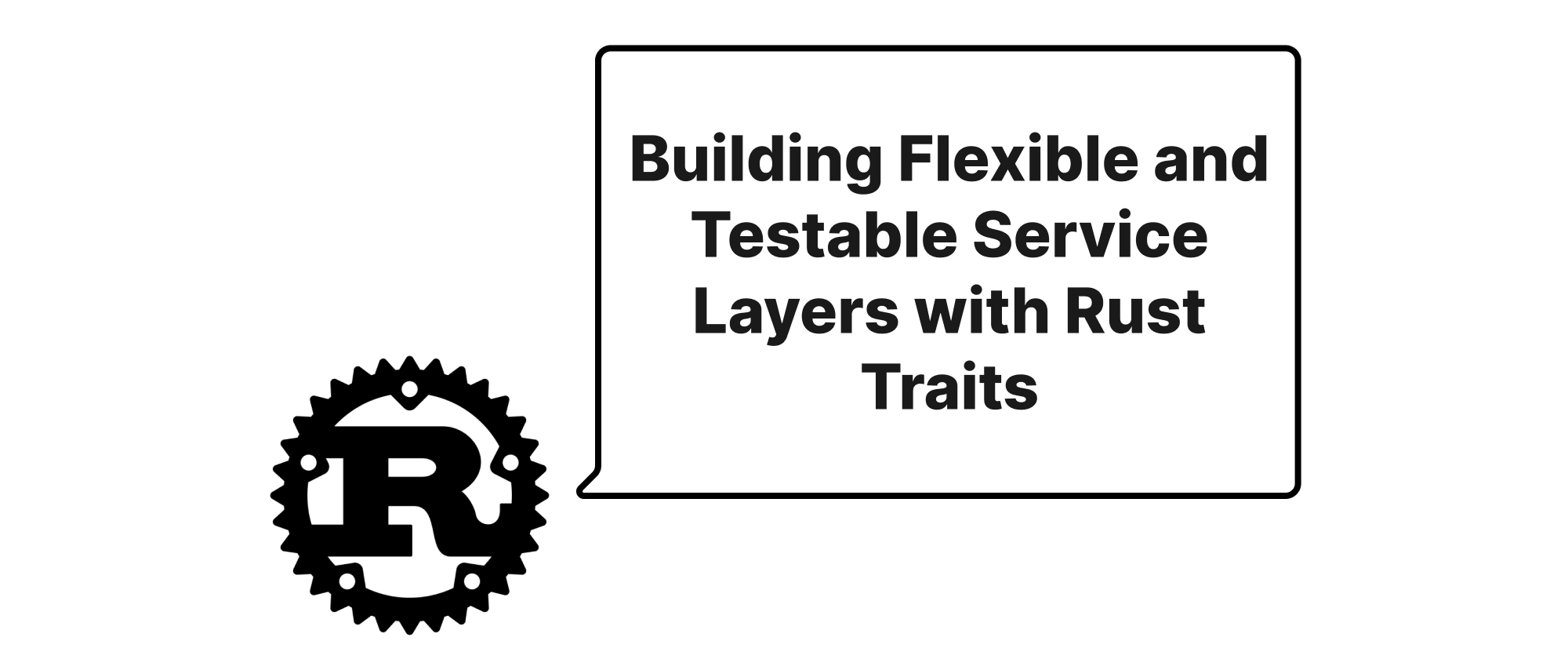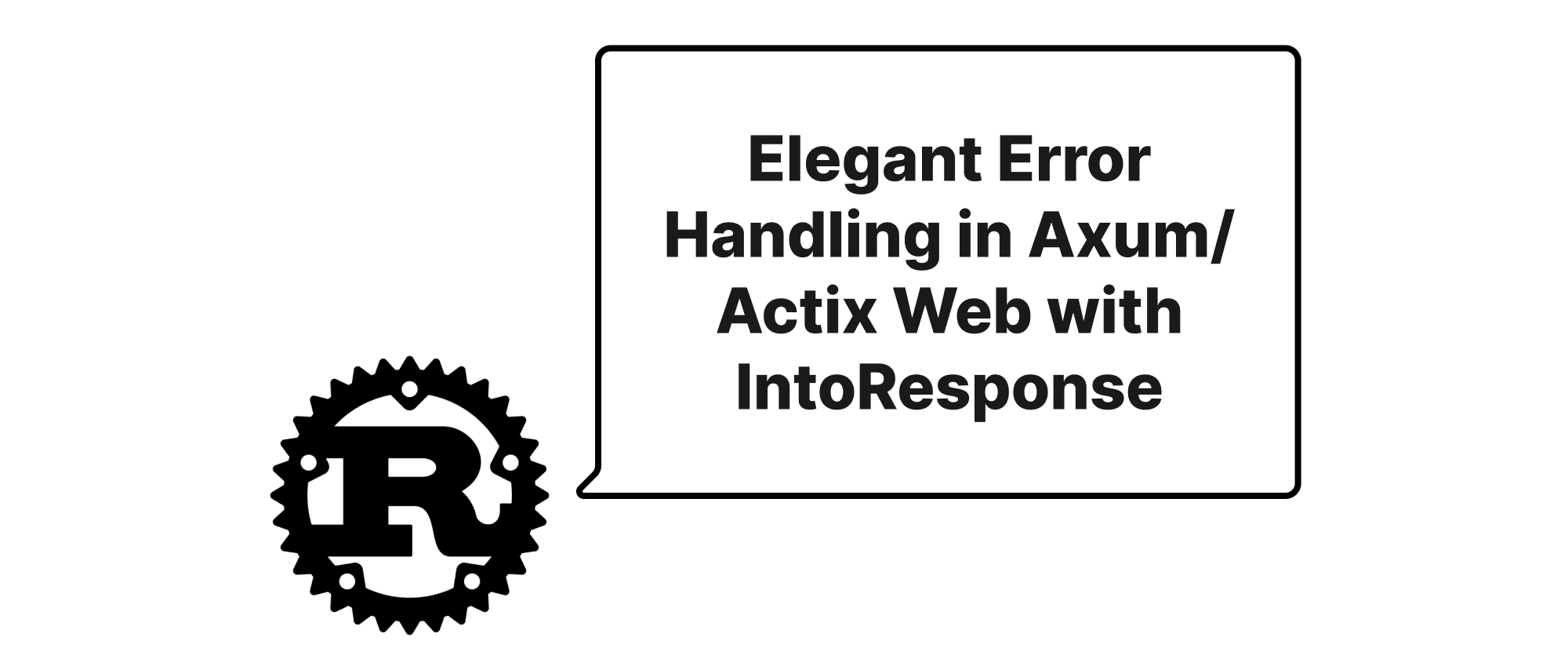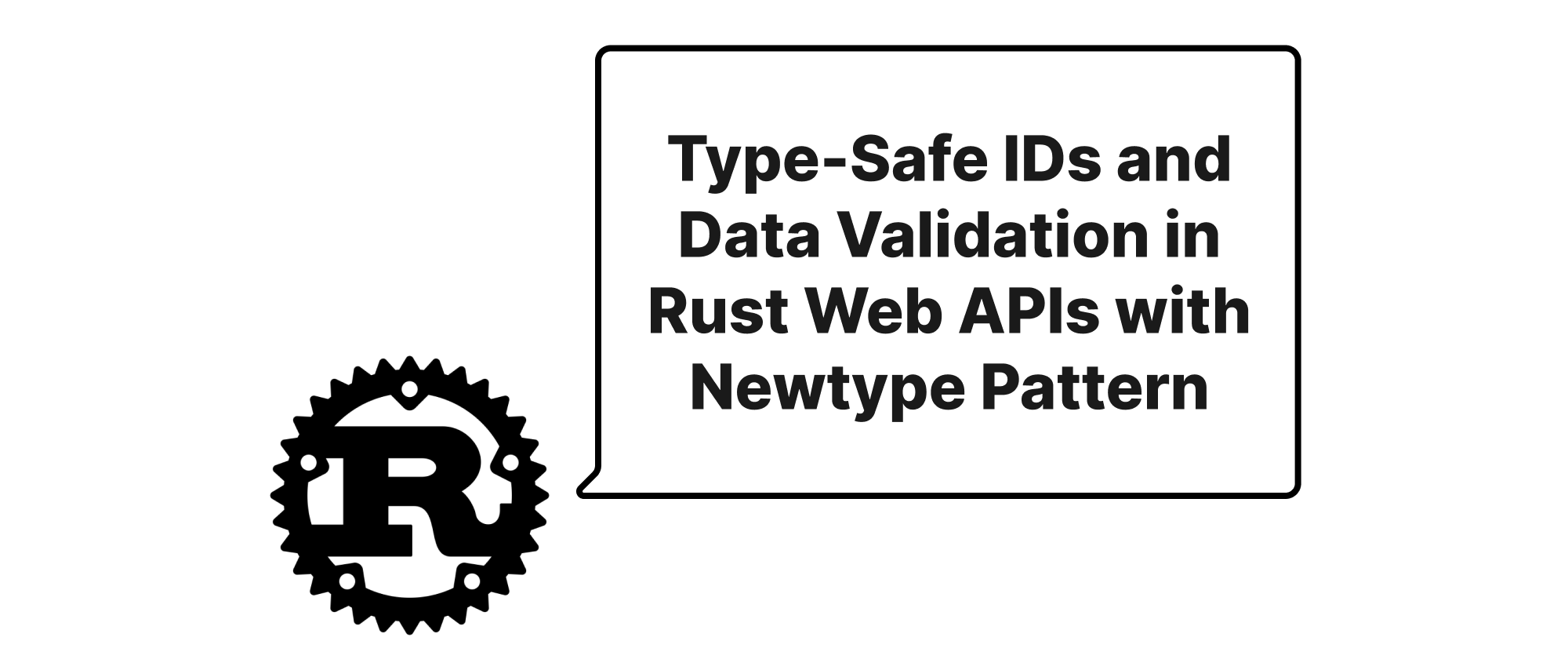Building Flexible and Testable Service Layers with Rust Traits
Grace Collins
Solutions Engineer · Leapcell

Introduction
In modern software development, building applications that are both maintainable and extensible is paramount. A well-structured application often benefits from clear separation of concerns, where business logic is encapsulated within a "service layer." However, without proper design, this service layer can become tightly coupled to specific implementations, making testing difficult and future changes challenging. This is where the power of abstraction, particularly through Dependency Injection (DI) and testability, comes into play. In the Rust ecosystem, Traits offer an elegant and idiomatic solution to achieve these goals within your service layer. This article will delve into how Rust Traits can be effectively used to abstract service dependencies, leading to a more modular, testable, and robust application architecture.
Core Concepts Explained
Before diving into the implementation details, let's clarify some key terms that are central to this discussion:
- Service Layer: This architectural layer encapsulates the application's business logic. It provides an API for the higher-level presentation layer (e.g., a web handler) to interact with and orchestrates operations involving lower-level components like data repositories.
- Dependency Injection (DI): A software design pattern where components receive their dependencies from an external source rather than creating them themselves. This promotes loose coupling, making components more independent and easier to test.
- Trait (Rust): Rust's mechanism for defining shared behavior. A trait defines a set of methods that a type must implement to be considered to "implement" that trait. Traits are similar to interfaces in other languages but offer more powerful capabilities.
- Testability: The ease with which a component or system can be tested. High testability usually implies loose coupling, clear responsibilities, and the ability to isolate components for testing.
Abstracting Service Layers with Rust Traits
The core idea is to define traits that represent the contracts of our service layer's dependencies and the service layer itself. Instead of directly instantiating concrete types, our service layer will operate on trait objects or generic types constrained by these traits. This allows us to "inject" different implementations at runtime or during testing.
Example Scenario: A User Management Service
Let's consider a simple user management application. We'll need a UserRepository to interact with a database and a UserService to handle business logic related to users.
Step 1: Define Traits for Dependencies
First, we define a trait for our UserRepository. This trait specifies the operations our service needs from a user repository, such as find_by_id and save.
// In src/traits.rs or similar use async_trait::async_trait; use crate::models::{User, UserId}; // Assuming you have a User model and UserId type #[async_trait] pub trait UserRepository { async fn find_by_id(&self, id: &UserId) -> anyhow::Result<Option<User>>; async fn save(&self, user: User) -> anyhow::Result<User>; // Other repository methods... }
Notice the #[async_trait] attribute. Since Rust traits do not directly support asynchronous methods in trait objects, async_trait is a widely used crate that enables defining and using async functions in traits.
Step 2: Implement Concrete Dependencies
Now, we can create concrete implementations of our UserRepository trait. For example, a PostgresUserRepository and a MockUserRepository for testing.
// In src/infra/mod.rs or similar use sqlx::{PgPool, Postgres}; // Example: Using sqlx for database interaction use crate::models::{User, UserId}; use crate::traits::UserRepository; use anyhow::anyhow; pub struct PostgresUserRepository { pool: PgPool, } impl PostgresUserRepository { pub fn new(pool: PgPool) -> Self { PostgresUserRepository { pool } } } #[async_trait] impl UserRepository for PostgresUserRepository { async fn find_by_id(&self, id: &UserId) -> anyhow::Result<Option<User>> { // Placeholder: Actual database query would go here println!("Fetching user {} from PostgreSQL", id.0); Ok(Some(User { id: id.clone(), name: "John Doe".to_string(), email: format!("{}@example.com", id.0) })) // sqlx::query_as!(User, "SELECT id, name, email FROM users WHERE id = $1", id.0) // .fetch_optional(&self.pool) // .await // .map_err(|e| anyhow!("Failed to fetch user: {}", e)) } async fn save(&self, user: User) -> anyhow::Result<User> { // Placeholder: Actual database insertion/update println!("Saving user {} to PostgreSQL", user.id.0); Ok(user) // sqlx::query_as!(User, "INSERT INTO users (id, name, email) VALUES ($1, $2, $3) ON CONFLICT(id) DO UPDATE SET name=$2, email=$3 RETURNING id, name, email", // user.id.0, user.name, user.email) // .fetch_one(&self.pool) // .await // .map_err(|e| anyhow!("Failed to save user: {}", e)) } } // In src/tests/mocks.rs or similar use std::collections::HashMap; use parking_lot::RwLock; // For thread-safe mutable access in a mock use crate::models::{User, UserId}; use crate::traits::UserRepository; pub struct MockUserRepository { users: RwLock<HashMap<UserId, User>>, } impl MockUserRepository { pub fn new() -> Self { MockUserRepository { users: RwLock::new(HashMap::new()), } } pub fn insert_user(&self, user: User) { self.users.write().insert(user.id.clone(), user); } } #[async_trait] impl UserRepository for MockUserRepository { async fn find_by_id(&self, id: &UserId) -> anyhow::Result<Option<User>> { println!("Fetching user {} from Mock", id.0); Ok(self.users.read().get(id).cloned()) } async fn save(&self, user: User) -> anyhow::Result<User> { println!("Saving user {} to Mock", user.id.0); self.users.write().insert(user.id.clone(), user.clone()); Ok(user) } }
Note: For brevity, User and UserId model definitions are omitted but assumed to exist.
Step 3: Define the Service Trait (Optional but Recommended)
For more complex services, or if you want to allow different implementations of the entire service layer, you can define a trait for your UserService as well. This is particularly useful if you have different strategized versions of the same service.
// In src/traits.rs or similar #[async_trait] pub trait UserService { async fn get_user_by_id(&self, id: &UserId) -> anyhow::Result<Option<User>>; async fn create_user(&self, name: String, email: String) -> anyhow::Result<User>; // Other service methods... }
Step 4: Implement the Service Using Trait Objects or Generics
Now, implement UserService. Instead of depending on PostgresUserRepository, it will depend on any type that implements UserRepository.
Option A: Trait Objects (Box<dyn Trait>)
This is often the most straightforward approach when you need to store different concrete implementations that implement the same trait.
// In src/services/mod.rs or similar use std::sync::Arc; // Use Arc for shared ownership use uuid::Uuid; use crate::models::{User, UserId}; use crate::traits::{UserRepository, UserService}; pub struct UserServiceImpl { user_repo: Arc<dyn UserRepository>, // Dependency injected as a trait object } impl UserServiceImpl { // Constructor takes a type that implements UserRepository, then converts to Arc<dyn UserRepository> pub fn new(user_repo: Arc<dyn UserRepository>) -> Self { UserServiceImpl { user_repo } } } #[async_trait] impl UserService for UserServiceImpl { async fn get_user_by_id(&self, id: &UserId) -> anyhow::Result<Option<User>> { self.user_repo.find_by_id(id).await } async fn create_user(&self, name: String, email: String) -> anyhow::Result<User> { let new_user = User { id: UserId(Uuid::new_v4().to_string()), name, email, }; self.user_repo.save(new_user).await } }
Option B: Generics
Generics provide compile-time type checking and can sometimes offer better performance due to monomorphization. They are suitable when the specific concrete type of the dependency is known at compile time and you don't need to dynamically swap implementations at runtime in the same spot.
// In src/services/mod.rs or similar // ... imports ... pub struct UserServiceImplGeneric<R: UserRepository> { // R is a generic type constrained by UserRepository trait user_repo: R, } impl<R: UserRepository> UserServiceImplGeneric<R> { pub fn new(user_repo: R) -> Self { UserServiceImplGeneric { user_repo } } } #[async_trait] impl<R: UserRepository + Send + Sync> UserService for UserServiceImplGeneric<R> { // R must also be Send + Sync for async trait async fn get_user_by_id(&self, id: &UserId) -> anyhow::Result<Option<User>> { self.user_repo.find_by_id(id).await } async fn create_user(&self, name: String, email: String) -> anyhow::Result<User> { let new_user = User { id: UserId(Uuid::new_v4().to_string()), name, email, }; self.user_repo.save(new_user).await } }
For service layers, Box<dyn Trait> (or Arc<dyn Trait> for shared ownership) is often preferred for its flexibility in dependency injection, as it allows mixing different concrete types in a collection or swapping them dynamically. Generics are excellent for more fundamental building blocks or situations where performance is absolutely critical and monomorphization is acceptable.
Step 5: Wiring It Up (Dependency Injection)
In our main application entry point (e.g., main.rs or a DI container), we can now instantiate the concrete dependencies and inject them into our service.
// In src/main.rs or a web framework's application setup use std::sync::Arc; use crate::infra::PostgresUserRepository; use crate::services::UserServiceImpl; // Assuming using the trait object version use crate::traits::{UserRepository, UserService}; use crate::models::UserId; #[tokio::main] async fn main() -> anyhow::Result<()> { // 1. Initialize concrete dependencies // let pool = PgPool::connect("postgresql://user:password@localhost/db").await?; // let concrete_repo = PostgresUserRepository::new(pool); // For this example, let's just create a dummy repo let concrete_repo = PostgresUserRepository::new( sqlx::PgPool::connect("postgres://user:password@localhost/db").await .unwrap_or_else(|_| panic!("Failed to connect to DB for example")) // Dummy pool ); // 2. Create an Arc<dyn Trait> from the concrete implementation let user_repo: Arc<dyn UserRepository> = Arc::new(concrete_repo); // 3. Inject the dependency into the service let user_service = UserServiceImpl::new(user_repo.clone()); // 4. Use the service println!("--- Application Logic ---"); let user_id = UserId("123".to_string()); user_service.create_user("Alice".to_string(), "alice@example.com".to_string()).await?; if let Some(user) = user_service.get_user_by_id(&user_id).await? { println!("Found user: {} ({})", user.name, user.email); } else { println!("User {} not found.", user_id.0); } Ok(()) }
Step 6: Enhancing Testability
This setup significantly improves testability. We can now easily test our UserService in isolation by injecting a MockUserRepository.
// In src/services/mod.rs or src/services/tests.rs #[cfg(test)] mod tests { use super::*; use crate::tests::mocks::MockUserRepository; // Our mock implementation use crate::models::{User, UserId}; #[tokio::test] async fn test_create_user() -> anyhow::Result<()> { let mock_repo = Arc::new(MockUserRepository::new()); let user_service = UserServiceImpl::new(mock_repo.clone()); let new_user = user_service.create_user("Bob".to_string(), "bob@example.com".to_string()).await?; // Verify that the user was "saved" by checking the mock repository let fetched_user = mock_repo.find_by_id(&new_user.id).await?; assert!(fetched_user.is_some()); assert_eq!(fetched_user.unwrap().name, "Bob"); Ok(()) } #[tokio::test] async fn test_get_user_by_id_found() -> anyhow::Result<()> { let mock_repo = Arc::new(MockUserRepository::new()); let user_id = UserId("456".to_string()); mock_repo.insert_user(User { id: user_id.clone(), name: "Charlie".to_string(), email: "charlie@example.com".to_string(), }); let user_service = UserServiceImpl::new(mock_repo); let user = user_service.get_user_by_id(&user_id).await?; assert!(user.is_some()); assert_eq!(user.unwrap().name, "Charlie"); Ok(()) } #[tokio::test] async fn test_get_user_by_id_not_found() -> anyhow::Result<()> { let mock_repo = Arc::new(MockUserRepository::new()); let user_service = UserServiceImpl::new(mock_repo); let user_id = UserId("789".to_string()); let user = user_service.get_user_by_id(&user_id).await?; assert!(user.is_none()); Ok(()) } }
Conclusion
By meticulously defining the contracts of our service dependencies and the service layer itself through Rust Traits, we unlock a powerful pattern for building flexible and robust applications. This approach enables clear dependency injection, allowing us to swap out concrete implementations for testing or different runtime environments without modifying the service's core logic. The result is a highly testable codebase, reduced coupling between components, and a more maintainable application architecture. Embracing Rust Traits for service layer abstraction is a cornerstone of crafting well-engineered Rust applications that stand the test of time and change.


